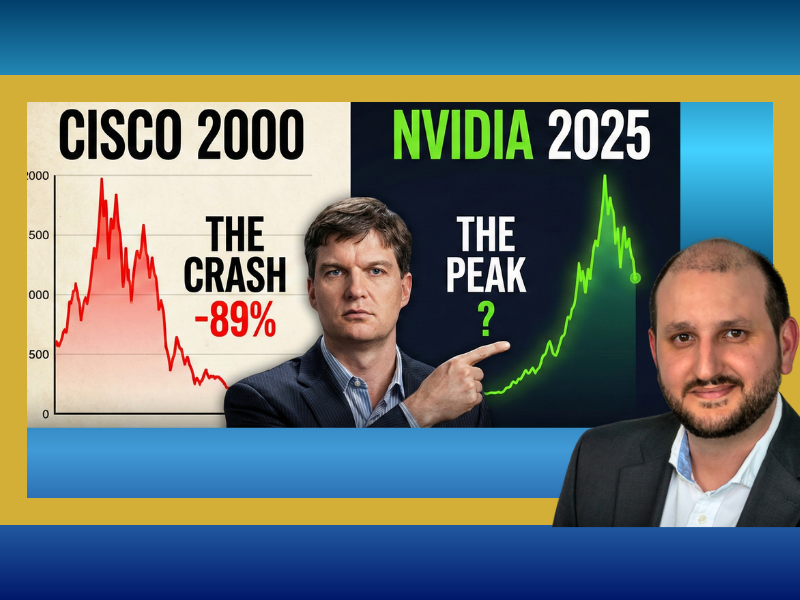Running on Fumes? Why the Stock Market and the Real Economy Are Telling Two Different Stories
- Nico DE BONY
.jpg/v1/fill/w_320,h_320/file.jpg)
- Aug 10
- 3 min read
Updated: Aug 12

It’s one of the most confusing times to be an investor.
On one hand, you see stock market tickers flashing all-time highs. The news celebrates a resilient market, and the fear of missing out (FOMO) is palpable. It feels like the party is in full swing.
On the other hand, you hear whispers—and sometimes shouts—of a slowing economy. You feel a growing sense that something is off, and you're right to pay attention.
If you’re feeling caught between the hype and the hard data, you’re not alone. The market and the real economy are telling two very different stories right now, and understanding the gap between them is the first step to protecting your capital and finding peace of mind.
The View from the Skyscraper: A Market Running on Confidence
From a distance, the market looks invincible. But a closer look at the engine reveals it may be running on fumes.
Record-High Margin Debt: Investors are borrowing money at record levels to buy stocks. This kind of exuberance is classic "market top" behavior, leaving the system fragile.
A Chart With a Worrying Echo: For those who watch technical patterns, the S&P 500 (SPX) chart today looks eerily similar to its 2007 peak, right before the -57% crash of the Global Financial Crisis. History doesn't always repeat, but it often rhymes.
The Cracks in the Foundation: What the Data Really Shows
While the market celebrates, the economic foundation is showing clear signs of strain.
The "Strong" US Labor Market Isn't: The official job numbers are consistently revised down, with recent revisions being worse than those during the 2008 crisis. The more reliable household survey even shows significant job losses, directly contradicting the mainstream narrative.
Canada's Job Market Flashes Red: The news south of the border is just as concerning. Canada just posted an unexpected loss of 41,000 jobs, with the damage concentrated in full-time positions. This wasn't a minor blip; it was the worst, most broad-based job loss since 2022.
The "Smart Money" is Seeking Shelter: We are seeing a classic flight to safety. Gold is behaving just as it did in 2007-2008, and the demand for ultra-safe T-bills is unusually high. This suggests sophisticated investors are preparing for instability.
The Road Ahead: Why the Next Two Months Could Be Volatile
These warning signs aren't just in the rearview mirror. Several key events on the horizon could trigger significant volatility.
The upcoming QCEW jobs data revision in September could be the final blow that officially confirms the recessionary environment we're in. Furthermore, all eyes are on Nvidia's (NVDA) earnings call at the end of August. Given its massive influence on the entire market, any disappointment could have an outsized impact.
Based on these factors, the most likely scenario over the next two months is a market correction, potentially a 10-15% drop in the SPX and Nasdaq. In contrast, safe havens like Gold look technically poised for another leg up toward the $4,000-$4,100 range.
From FOMO to FOGC: Fear of Getting Caught
This brings us to the dangerous psychological trap for investors. You’re torn between the Fear Of Missing Out on the rally and a growing Fear Of Getting caught in the downturn.
This uncertainty leads to paralysis or, worse, emotional decisions—like chasing the market at its peak just as the institutional players are quietly heading for the exits.
Your Strategy: From Prediction to Preparation
So, what are you supposed to do with this information?
The answer isn't to perfectly time the market. It's to have a robust strategy that prepares you for a range of outcomes. With OPTI Strategies, my focus is on helping you build a plan that allows you to navigate this uncertainty with confidence.
A proactive strategy isn't about being "in" or "out." It’s about:
Preserving Your Capital: Your first job as an investor is to manage risk so you can stay in the game.
Understanding the Full Picture: Cutting through the noise to see the real signals that matter.
Using the Right Tools: This is where you can take control. By learning simple options strategies, you can define your risk, protect your portfolio from severe downturns, and even generate income while you wait for clearer opportunities.
You don't have to navigate this confusing landscape alone. If this analysis resonates with you, and you're ready to move from reacting to the headlines to building a confident plan, let's talk.
Schedule your free strategy call today, and we can discuss the steps to take control of your investments.
%20-%20WO%20BG.png)


